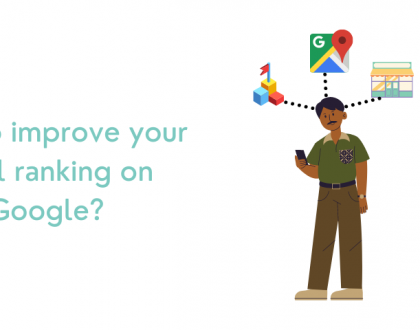Know Your Niche Potential. Get Your SEO Forecasting Right!

2 Min Read
Imagine this. You decide to buy a product. What all are the factors you check and consider before you buy that apt product? You check for reviews and ratings. You check for the brand’s trustworthiness. You check for its servicing after purchase. You perform aggressive research especially if it’s a big amount that you’re investing. You only hit the ‘buy’ button when you’re fully convinced that the said brand upon which you researched is worthy to be purchased. Can we think of it in a similar manner when it comes to SEO? Can we determine the value of a keyword before optimizing for it? Can we evaluate and forecast monthly traffic, the number of leads, and revenue that a set of keywords can bring to our site?
SEO is dicey and tricky. Being able to measure and predict the financial value of SEO to a business with accuracy and finesse can be a daunting & challenging task which is understood because it is not at all a simple process. But it is of extreme value because it leads to better decision making and greater ROI.

As more and more investment drives into this channel of marketing it’s all the more important to be on firm ground when it comes to knowing its potential. Because it’s just fair and good business sense, you just can’t afford your money going down the drain with superficial techniques.
So How Do We Exactly Go About Doing It Right?

Paid marketing gets the least clicks – stats in 2017 said that 70% of the links search users click are organic when it comes to predicting its keyword value, there are many mediums where you can find out its core value in the market. And ironically lesser mediums to forecast organic marketing potential. So let’s get into the crux of the situation and understand some key factors that you need to consider when it comes to organic forecast:
Base Forecast
Historical Trends
Seasonality
Growth
Events
Before getting into each of these, there is an important groundwork that you need to work on i.e. to evaluate your current situation.
You need to assess and review your current organic traffic and other ranking data such as historical traffic data, ranking data, seasonal changes in search volume, etc. to have a good picture of what is your current stand and what would be the value for an increase in traffic. Google Analytics is always a go-to place to observe all these metrics, but to obtain a more in-depth understanding of website performance, we rely on SEMrush. You can integrate your GA into it and have a look at your overall growth spectrum. Click here to know how to use SEMrush for forecasting SEO potential.
Now let’s look at the factors in detail…
Base Forecast
It is crucial to determine your base when you create your forecast before adding new factors into it. The base forecast in terms of numbers is usually the mean for every data point in your charted data. Depending on the data you have in hand, your base forecast may be the portion where you start building an accurate prediction or where you stop.
Historical Trends
Diving into your historical data is a good place to start. It just makes sense; when you aim for a score in your exams, you analyze your past performance and study patterns through which you estimate your potential and then you set a score.
Preferably, monthly traffic data of at least 2 years needs to be pulled which you can easily do with the help of Google Analytics.
Go to Acquisition -> All Traffic -> Channels report.

2. Click on Organic Search
3. Select the date range for which you want to view your data
4. Head to the top menu where you will find an option to export data.
5. Export it to a CSV
By analyzing your historical data, valuable insights such as past seasonal trends, spikes, and dips in performance can be revealed. It could be minor website development or a sale you rolled out, or some other SEO secret sauce that you implemented which gave you an increase in traffic. Either way, you get a deep understanding of what works and what doesn’t work for your brand in organic search.
However, you need to take into account only the recurring events and happenings. If an atypical event has occurred in your historical data, you might want to cancel the impact of that event in your future because that is highly unlikely to happen(fingers crossed). For example, you had a major technical problem in your server last year which costs you a significant number of website visits because of your transfer to a new server. Now, if this was a one-time event, you can safely cancel the impact it has caused and increase the very same numbers in your forecast that fell due to this event.
Seasonality
Next, you need to look at the impact that seasonal trends have had on your traffic numbers. For this, you need to pull bigger data of at least 3-4 years to view consistency in seasonal changes. For instance, if you’re an e-commerce based website and hold stock of weather-based products that work best for that particular weather, then you need to take into account that peak in numbers estimated in that season. Also during festivals, there usually is a substantial increase in sales. Now, since this is a recurring event, you can consider its impact in your forecast and negate outliers that are non-recurring.
Moz’s article clearly explains the technique of incorporating seasonality into your organic traffic forecast.
Growth
Is there a possibility of your link building budget increase? Are you planning to reach out to different websites as a part of your link building strategy? Well, growth needs to be there and counted as a factor for your forecast. Being stagnant in your business is not going to lead up to anything because search engine algorithms are changing continuously and you need to adapt accordingly with respect to the strategy.
You need to have a proper picture of your development schedule by keeping components of industry competitiveness, past experience of algorithm updates, etc. in mind and plan out a marketing schedule by knowing when you’ll expect to obtain new links and the number of links that you’re expecting to see more than your competitors.
Events
Just like how you took into account the impact of your big events that happened in history, similarly, you need to plan and take into consideration any upcoming events that would impact your traffic. It could be as simple as rolling out a new piece of content with a different touch, this time maybe you might be bringing a celeb author for your next piece or trying something new.
To measure the impact of events, you again need to go down your history to identify the expected increase in your organic traffic. Once you have found this estimate the next step is to add it to the respective months of event release.
Measuring your forecast accuracy
It’s risky to accurately predict your SEO potential but doable. If you see your website as a stable source of revenue then forecasting it with optimum accuracy is crucial. Also, you need to set realistic expectations. Unattainable results that cannot be achieved can shatter your business and cause a huge loss.
There is a formula given in the above-said article by Moz which you can use to compare your forecast to your actual results.

Where M stands for Mean Absolute Percent Error which gives you the forecast accuracy for the total given forecast time period.
Conclusion
Sure, forecasting is a tedious process but is very essential to stay on track of your SEO efforts, identifying opportunities for growth and improvement and prioritizing tasks.
SEO forecasting when done right can take you to victorious heights!
Forecasting is an art and we carry the apt skill to seek the clear potential of your growing business. Our Agency has a cumulative experience of 9 years and we know what it takes to rank on search engines.
Contact Us to Know More!
Recommended Posts

How does local SEO help your website rank better on Google?
March 11, 2022

Why Your Website not visible on Google? Find out
March 7, 2022

